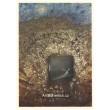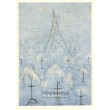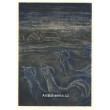Košík
0
x
Produkty
(prázdný)
Žádné díla
Bude determinováno
Dopravné a balné
0 Kč
Celkem
Produkt byl úspěšně přidán do nákupního košíku
Počet
Celkem
0 ks zboží.
1 dílo v košíku.
Za díla:
Doručení a balné:
Bude determinováno
Celkem
Kategorie
- grafiky/tisky
- obrazy
- kresby
- plakáty
- fotografie
- exlibris
- bibliofilie
- knihy/katalogy
- starožitnosti
- sochy/plastiky
- sklo
-
Hnutí
- abstrakce
- art-deco
- čs.avantgarda/moderna
- expresionismus
- fauvismus
- impresionismus
- kubismus
- naivní umění
- op-art
- poetismus
- pop-art
- realismus
- secese
- sociální kritika
- soudobá tvorba
- surrealismus
- světová avantgarda/moderna
- Škola prof. Albína Brunovského
- Škola prof. Zdeňka Sklenáře
- Škola prof.Julia Mařáka - mařákovci
- Žánr
- Zprávy/NEWS
- Doporučujeme
Nová díla
-

Zamilovaný gondoliér
10 406 Kč -

Poryvy
11 374 Kč -

Vír IV
11 374 Kč
-

La Comédie Humaine (104) 10.1.1954 VII
242 Kč -80% 1 210 Kč
Hnutí
- abstrakce
- art-deco
- čs.avantgarda/moderna
- expresionismus
- fauvismus
- impresionismus
- kubismus
- naivní umění
- op-art
- poetismus
- pop-art
- realismus
- secese
- sociální kritika
- soudobá tvorba
- surrealismus
- světová avantgarda/moderna
- Škola prof. Albína Brunovského
- Škola prof. Zdeňka Sklenáře
- Škola prof.Julia Mařáka - mařákovci
Žánr
NEJŽÁDANĚJŠÍ UMĚLCI
- Anderle Jiří
- Augustovič Peter
- Benca Igor
- Beneš Karel
- Bím Tomáš
- Born Adolf
- Brun Robert
- Brunovský Albín
- Boštík Václav
- Bouda Cyril
- Bouda Jiří
- Braque Georges
- Brázda Jiří
- Buffet Bernard
- Cézanne Paul
- Čapek Josef
- Čápová Hana
- Dalí Salvador
- Demel Karel
- Dudek Josef
- Dufy Raoul
- Effel Jean
- Felix Karol
- Filla Emil
- Giacometti Alberto
- Grosz George
- Chagall Marc
- Istler Josef
- Janeček Ota
- Jiřincová Ludmila
- Kandinsky Wassily
- Kĺúčik Peter
- Komárek Vladimír
- Kulhánek Oldřich
- Kupka František
- Lada Josef
- Lhoták Kamil
- Matisse Henri
- Miró Joan
- Mucha Alfons
- Muzika František
- Picasso Pablo
- Pileček Jindřich
- Reynek Bohuslav
- Sukdolák Pavel
- Suchánek Vladimír
- Svolinský Karel
- Šíma Josef
- Špála Václav
- Švabinský Max
- Švengsbír Jiří
- Tichý František
- Toulouse-Lautrec Henri de
- Toyen
- Trnka Jiří
- Váchal Josef
- Vik Karel
- Warhol Andy
- Zábranský Vlastimil
- Zoubek Olbram
- Zrzavý Jan
Seznam děl umělce Diviš Alén
Alén Diviš (1900 – 1956) se v posledních třiceti letech stal pro české umění synonymem uměleckého outsiderství. Samotářský a nezařaditelný tvůrce halucinačních vizí, hororových scén i procítěných náboženských výjevů byl doposud jednou z nejméně probádaný
Alén Diviš (1900 – 1956) se v posledních třiceti letech stal pro české umění synonymem uměleckého outsiderství. Samotářský a nezařaditelný tvůrce halucinačních vizí, hororových scén i procítěných náboženských výjevů byl doposud jednou z nejméně probádaných osobností českého výtvarného umění, opředenou mnohými legendami a mýty.
Alén Diviš prožil většinu svého života v zahraničí. Na konci dvacátých let odejel do tehdejšího centra moderního umění Paříže. Zde byl na počátku druhé světové války obviněn ze špionáže a strávil několik měsíců na samotce ve vězení Santé. Po románové cestě koncentračními tábory ve Francii, Maroku a na Martiniku našel útočiště v New Yorku. Do Československa se vrátil až v roce 1947 a dočkal se tu krátkého období zájmu o svou práci. V nových podmínkách po roce 1948 ho však brzy čekala marginalizace, chudoba a zapomenutí. Diviš byl v různých časových etapách ovlivněn kubismem a expresionismem, osobitým způsobem předznamenal art brut či informel. Jeho tvorba ale především vycházela ze silného zaujetí existenciálními tématy, ať už inspirovanými vlastními tragickými osudy nebo literaturou.
Tato dosud nejrozsáhlejší Divišova výstava shromažďuje poprvé celek jeho dochované tvorby. Obsahuje klíčový cyklus vězeňských zdí, ilustrační doprovod k baladám Karla Jaromíra Erbena a povídkám Edgara Alana Poea, a na závěr představuje velkoformátové uhlové kresby inspirované biblickými příběhy.
V souvislosti s výstavou vydává Nadace Karla Svolinského a Vlasty Kubátové první obsáhlou monografii Aléna Diviše s několika sty barevnými reprodukcemi. Jejími autory jsou Vanda Skálová a Tomáš Pospiszyl, kteří shromáždili doposud neznámá fakta o malířově životě a díle.
V rámci expozice bude promítán dokumentární film Martina Řezníčka Sbohem slunce (2002). Film zachytil vzpomínky těch, kdo se s malířem Alénem Divišem setkali osobně.
In: http://www2.rudolfinum.org/index.php?site=vystavy%2Fvystavy-archiv&id=59
*****
Alén Diviš (26 April 1900 – 15 November 1956) was a Czech painter known for his melancholic art. Having spent much of his life abroad, often working in solitude, he remained rather unknown during his life but has had a postmortem revival in the art world.
Contents [hide]
1 Early Life and career
2 Imprisonment
3 New York
4 Return to Czechoslovakia
5 References
6 Further reading
7 External links
(edit] Early Life and career
Diviš was born in Blato u Poděbrady but in 1911, his the family moved to Prague.[1] It was there that Diviš first attended painting lessons briefly attended the College of Applied Arts. In his early 20s, Diviš became intensely focused on art, particularly with cubism. In the summer of 1926, he moved to Paris to devote himself fully to his art. In Paris, he attended lectures by František Kupka and explored cubism, expressionism, and classicism.[1] He made new friends in the French artistic community and maintained friendships with other Czechs there, such as composer Bohuslav Martinů. He began to travel further abroad, making trips to Spain, South Africa and the Netherlands. The first exhibition of his work took place in 1932 at Van Leer gallery.[1]
[edit] Imprisonment
In 1939, in reaction to the German occupation of Czechoslovakia, Diviš became increasingly political and, with other expatriates, formed the House of Czechoslovak Culture.[2] Upon France's entry into the Second World War, Diviš and other members of the organization were arrested and charged with espionage. The reason for the arrests is unclear; perhaps their "sympathies for communism" caused suspicion,[1] or it may have been their uncommonly celebratory reaction to the outbreak of war (which they hoped would lead to the liberation of Czechoslovakia).[2] Whatever the reason, Diviš would spend the next six months in La Santé Prison, one of France's toughest.[2] The sombre mood and the inscriptions and graffiti on the cell walls would inspire his later artistic vision.[1] The charges of espionage were dropped, but Diviš would spend another year and a half in concentration and internment camps in France, Morocco, and Martinique before his eventual release.[1]
[edit] New York
In the early 1940s, Diviš finally found asylum in New York where he continued his work until after the war. His art focused primarily on his time in prison, and used images of cell wall graffiti, dreams and dark hallucinations that came with isolation - a style which would later be termed Art Brut or Outsider Art.[1] He worked on parallel sets of painting, and also landscapes of South Africa, where he had travelled before the war. While in the Unite States, Diviš would established links with the local Czech community and was reunited with his friend Martinů. Although his worked gained some attention in New York, he was unable to arrange an exhibition of his work.[1]
[edit] Return to Czechoslovakia
Wedding Shirts illustration for Karel Jaromír Erben's KyticeIn 1947, after the end of the Second War and the liberation of Czechoslovakia, Diviš returned to his native country, more than two decades after he had first left for Paris.[2] Upon his return, he achieved a brief period of success. His written memoirs of Santé were published in a weekly paper, and in February 1948, his recent work was exhibited in Prague.[1] The same month, however, brought the Communist coup d'état which would marginalize artists of his type out of work.[2] He spent the rest of the decade producing illustrations for Karel Jaromír Erben's mid-19th century collection of ballads "Kytice", but only "Svatební košile" (Wedding Shirt) was published (in 1952).[1] He also produced a series of illustrations for short stories by Edgar Allan Poe.
In the 1950s, under the harsh conditions of communism in Czechoslovakia, Diviš gave up seeking exposure for his work and focused on spiritual images, such as Christ's crucifixion and bible stories, unlikely to be published[1] By the time of his death, he and his art were almost entirely forgotten. Only his friends, such as sculptor Hedvika Zaorálková, remembered him and preserved his work, which was rediscovered in the 1980s.[1][2]
[In: http://en.wikipedia.org/wiki/Al%C3%A9n_Divi%C5%A1
Zobrazit
Alén Diviš prožil většinu svého života v zahraničí. Na konci dvacátých let odejel do tehdejšího centra moderního umění Paříže. Zde byl na počátku druhé světové války obviněn ze špionáže a strávil několik měsíců na samotce ve vězení Santé. Po románové cestě koncentračními tábory ve Francii, Maroku a na Martiniku našel útočiště v New Yorku. Do Československa se vrátil až v roce 1947 a dočkal se tu krátkého období zájmu o svou práci. V nových podmínkách po roce 1948 ho však brzy čekala marginalizace, chudoba a zapomenutí. Diviš byl v různých časových etapách ovlivněn kubismem a expresionismem, osobitým způsobem předznamenal art brut či informel. Jeho tvorba ale především vycházela ze silného zaujetí existenciálními tématy, ať už inspirovanými vlastními tragickými osudy nebo literaturou.
Tato dosud nejrozsáhlejší Divišova výstava shromažďuje poprvé celek jeho dochované tvorby. Obsahuje klíčový cyklus vězeňských zdí, ilustrační doprovod k baladám Karla Jaromíra Erbena a povídkám Edgara Alana Poea, a na závěr představuje velkoformátové uhlové kresby inspirované biblickými příběhy.
V souvislosti s výstavou vydává Nadace Karla Svolinského a Vlasty Kubátové první obsáhlou monografii Aléna Diviše s několika sty barevnými reprodukcemi. Jejími autory jsou Vanda Skálová a Tomáš Pospiszyl, kteří shromáždili doposud neznámá fakta o malířově životě a díle.
V rámci expozice bude promítán dokumentární film Martina Řezníčka Sbohem slunce (2002). Film zachytil vzpomínky těch, kdo se s malířem Alénem Divišem setkali osobně.
In: http://www2.rudolfinum.org/index.php?site=vystavy%2Fvystavy-archiv&id=59
*****
Alén Diviš (26 April 1900 – 15 November 1956) was a Czech painter known for his melancholic art. Having spent much of his life abroad, often working in solitude, he remained rather unknown during his life but has had a postmortem revival in the art world.
Contents [hide]
1 Early Life and career
2 Imprisonment
3 New York
4 Return to Czechoslovakia
5 References
6 Further reading
7 External links
(edit] Early Life and career
Diviš was born in Blato u Poděbrady but in 1911, his the family moved to Prague.[1] It was there that Diviš first attended painting lessons briefly attended the College of Applied Arts. In his early 20s, Diviš became intensely focused on art, particularly with cubism. In the summer of 1926, he moved to Paris to devote himself fully to his art. In Paris, he attended lectures by František Kupka and explored cubism, expressionism, and classicism.[1] He made new friends in the French artistic community and maintained friendships with other Czechs there, such as composer Bohuslav Martinů. He began to travel further abroad, making trips to Spain, South Africa and the Netherlands. The first exhibition of his work took place in 1932 at Van Leer gallery.[1]
[edit] Imprisonment
In 1939, in reaction to the German occupation of Czechoslovakia, Diviš became increasingly political and, with other expatriates, formed the House of Czechoslovak Culture.[2] Upon France's entry into the Second World War, Diviš and other members of the organization were arrested and charged with espionage. The reason for the arrests is unclear; perhaps their "sympathies for communism" caused suspicion,[1] or it may have been their uncommonly celebratory reaction to the outbreak of war (which they hoped would lead to the liberation of Czechoslovakia).[2] Whatever the reason, Diviš would spend the next six months in La Santé Prison, one of France's toughest.[2] The sombre mood and the inscriptions and graffiti on the cell walls would inspire his later artistic vision.[1] The charges of espionage were dropped, but Diviš would spend another year and a half in concentration and internment camps in France, Morocco, and Martinique before his eventual release.[1]
[edit] New York
In the early 1940s, Diviš finally found asylum in New York where he continued his work until after the war. His art focused primarily on his time in prison, and used images of cell wall graffiti, dreams and dark hallucinations that came with isolation - a style which would later be termed Art Brut or Outsider Art.[1] He worked on parallel sets of painting, and also landscapes of South Africa, where he had travelled before the war. While in the Unite States, Diviš would established links with the local Czech community and was reunited with his friend Martinů. Although his worked gained some attention in New York, he was unable to arrange an exhibition of his work.[1]
[edit] Return to Czechoslovakia
Wedding Shirts illustration for Karel Jaromír Erben's KyticeIn 1947, after the end of the Second War and the liberation of Czechoslovakia, Diviš returned to his native country, more than two decades after he had first left for Paris.[2] Upon his return, he achieved a brief period of success. His written memoirs of Santé were published in a weekly paper, and in February 1948, his recent work was exhibited in Prague.[1] The same month, however, brought the Communist coup d'état which would marginalize artists of his type out of work.[2] He spent the rest of the decade producing illustrations for Karel Jaromír Erben's mid-19th century collection of ballads "Kytice", but only "Svatební košile" (Wedding Shirt) was published (in 1952).[1] He also produced a series of illustrations for short stories by Edgar Allan Poe.
In the 1950s, under the harsh conditions of communism in Czechoslovakia, Diviš gave up seeking exposure for his work and focused on spiritual images, such as Christ's crucifixion and bible stories, unlikely to be published[1] By the time of his death, he and his art were almost entirely forgotten. Only his friends, such as sculptor Hedvika Zaorálková, remembered him and preserved his work, which was rediscovered in the 1980s.[1][2]
[In: http://en.wikipedia.org/wiki/Al%C3%A9n_Divi%C5%A1



